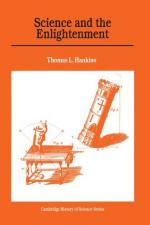
|
| Name: _________________________ | Period: ___________________ |
This quiz consists of 5 multiple choice and 5 short answer questions through Chapter 4, Chemistry.
Multiple Choice Questions
1. Chapter 1 states that the "geometric spirit" noted by ________ ensured that the same progress would occur in our knowledge about nature.
(a) Newton.
(b) Boyle.
(c) Locke.
(d) Fontenelle.
2. According to the narrator in Chapter 4, who was the most successful searcher for "airs"?
(a) Cavendish.
(b) Joseph Black.
(c) Joseph Priestley.
(d) Whytt.
3. Who was the most important German chemist, whose papers in the "Memoires" of the Berlin Academy, during the 1740s and 1750s, earned the admiration of the French chemists?
(a) Johann Juncker.
(b) Andreas Sigismund Marggraf.
(c) Nicolas Lemery.
(d) Baron d'Holbach.
4. According to the beginning of Chapter 1, in 1759 the French mathematician ________ described a revolution that he saw taking place in natural philosophy.
(a) Carnot.
(b) Euler.
(c) Newton.
(d) Jean Lerond d'Alembert.
5. Who was France's greatest hero of the Enlightenment partly because he was from England, the source of free thought and liberty and partly because he had solved the riddle of the planets, showing that their motions obeyed the same laws as motions on earth?
(a) Boyle.
(b) Newton.
(c) Fontenelle.
(d) Swift.
Short Answer Questions
1. What was the name of the philosopher who had a passion for humanity, a desire to "do good," and a penchant for reform, according to Chapter 1?
2. Who made the first extensive series of investigations of electricity in his book "De Magnete," according to Chapter 3?
3. In Chapter 4, Abbe Condillac claimed that ________ was the best language because it had the best symbols.
4. All of the following were forms of fire, according to Boerhaave and Musschenbroek, except for which one?
5. In 1757, thirty years after Hales described his experiments with ________, Joseph Black discovered the phenomenon of ________.
|
This section contains 283 words (approx. 1 page at 300 words per page) |

|




